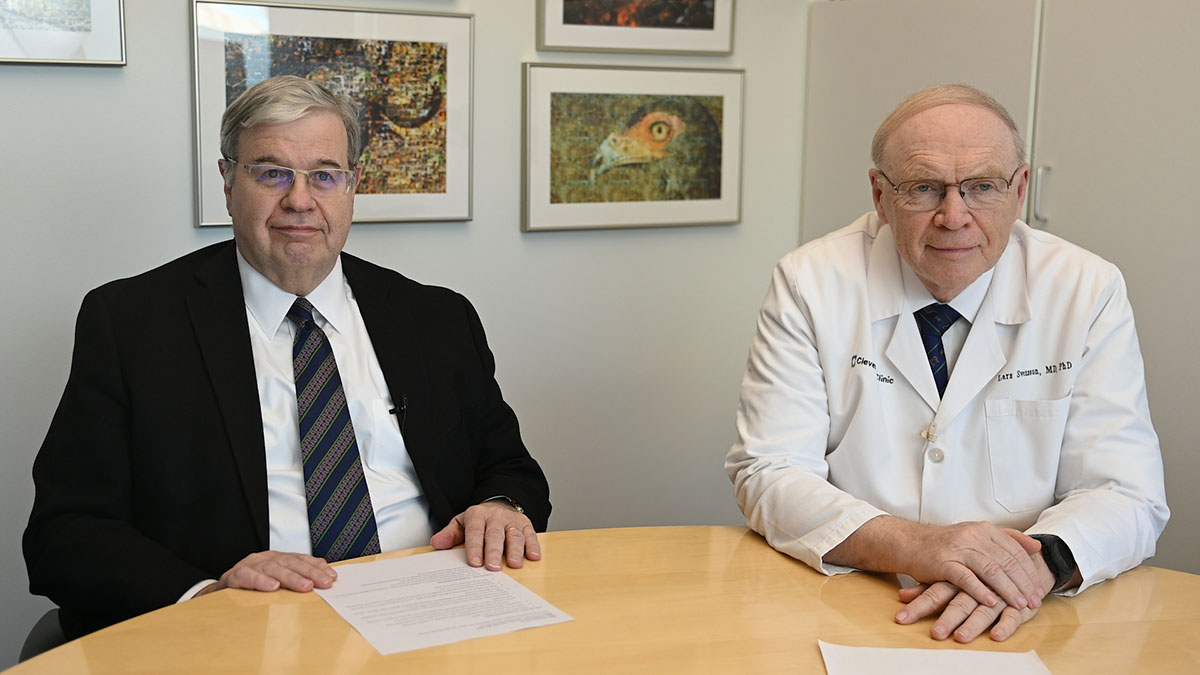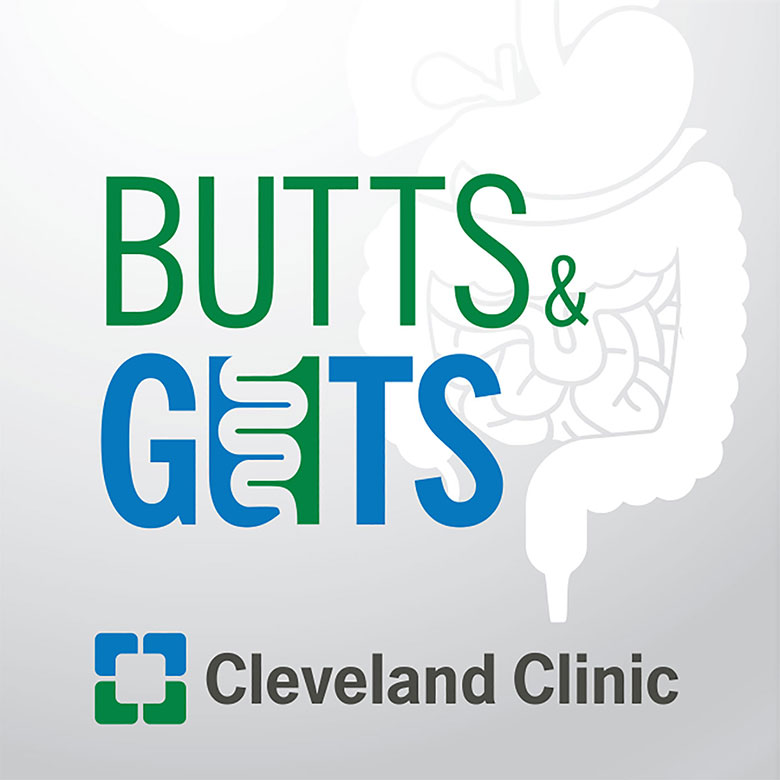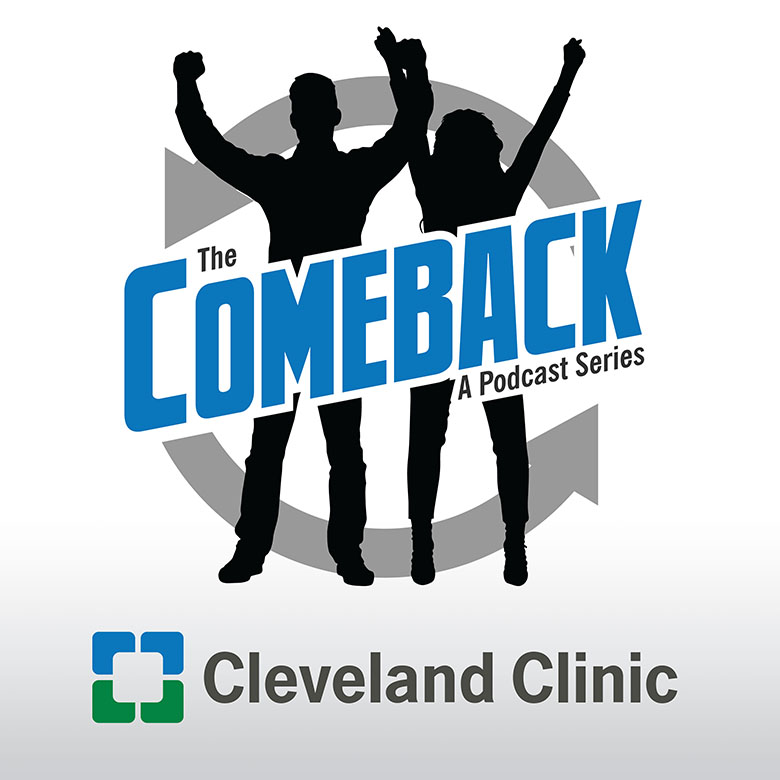Expertise in Bicuspid Valve Repair - Part II

Bicuspid aortic valve is a common heart condition where the aortic valve has only two leaflets instead of the normal three. In part two of this series, Lars Svensson, MD, PhD, and Brian Griffin, MD, discuss considerations for bicuspid valve surgery and what surgery follow-up is like.
Schedule an appointment at Cleveland Clinic by calling 844.868.4339.
Learn more about the Valve Center.
Subscribe to the free Love Your Heart monthly enewsletter for helpful resources including heart disease prevention and treatment tips, videos, news and research.
Listen to Part I of this podcast discussion.
Subscribe: Apple Podcasts | Podcast Addict | Buzzsprout | Spotify
Expertise in Bicuspid Valve Repair - Part II
Podcast Transcript
Announcer:
Welcome to Love Your Heart, brought to you by Cleveland Clinic’s Sydell and Arnold Miller Family Heart, Vascular and Thoracic Institute. This podcast will explore disease prevention, testing, medical and surgical treatments, new innovations and more. Enjoy.
Lars Svensson, MD, PhD:
Hello, I'm Lars Svensson and I'm the chief of the Heart, Vascular and Thoracic Institute. With me today is Brian Griffin. He's our Vice Chair for the Institute and also a leading imager. When I say imager, I’m talking about particularly an expert on echocardiography and all aspects of that. We look forward to chatting to you today about bicuspid valves.
When I see a patient for surgery, the patient has had a long discussion with our cardiology colleagues on the options. Let's go through a couple of scenarios here. In the young patient, and for that matter, up to 65 or so, patients with leaking aortic valves, bicuspid valves, without any calcium in those patients, we 85%, 90% of the time can tell the patient before the operation, "We can repair the valve for you." The reason why it's not higher than that is it depends on whether there's calcification on the leaflets that may not be seen, or thickening of the leaflets may not be seen by echo or CAT scan.
The basic approach in those patients is a minimally invasive J-incision. What that means is about a three-inch incision on the upper sternum, and inside in the J-part is to the right, in the third intercostal space from a medical point of view. Then we go in and repair the valve. The nice thing about the J-incision is we don't open the whole chest. A patient's respiratory function is better, there's less bleeding, they recover best, they have less pain, and they can start driving a car in two, three weeks after surgery and they get back to work earlier after surgery.
The basic technique for a bicuspid valve repair, and we've done now several thousand bicuspid valve repairs, and we've studied various subgroups of these patients, but let me tell you the basic technique. We first bring the two commissures together, so this is what we call the intercommissural angle. We bring that together so that we get better apposition of the leaflets. Then we look at the leaflets. Typically, as Brian said, the left-right leaflet may have incomplete fusion, so we placate that and that makes a then symmetrical bicuspid valve. Then in addition, what we do is what I call a figure of eight suspension suture. At each commissure we put a suture that hitches up the leaflets a bit more. Again, it's all about getting more apposition of the leaflets for longer long-term durability. That technique works very well for our patients.
In the isolated aortic valve repairs, and this is obviously for valves that are leaking, that's obviously the reason why the patients are having surgery, our freedom from re-operation at 10 years is 91%. In other words, 9% of patients out to 10 years, the valve will have failed. That is actually better than the results for the Ross procedure in most series with about 85% freedom from re-operation at 10 years. So, that's a really good approach.
If the root is more than 4.5 centimeters, then we have to address that at the time of surgery or if the ascending aorta at the time of a bicuspid valve surgery is more than 4.5, or if the indication for surgery is on average more than 5 centimeters in the ascending aorta, then we also potentially have to address the root. There are various techniques of doing that. The techniques I use are remodeling of the whole root. There's another technique that I developed where I cut out the commissures, free them up, hitch them up at a higher level and then close the root down. There's another way I do of doing both. Typically, in the bicuspid valve, you only have two sinuses, bring the sinuses down, do a bicuspid valve repair, and then you can get the root down to three centimeters or less. Then the other operation that we do a lot of is a re-implantation operation, and that's also for bicuspid valve. Those are the root options.
The one question that we addressed a couple of years ago is if we replace the ascending aorta at the same time as doing a bicuspid valve repair, does that result in a better long-term durability of the repair? As it turned out, the curves or the Kaplan-Meier curves from a medical point of view, were superimposable. In other words, replacing the ascending aorta with the bicuspid valve repair did not really add to the durability of the repair.
We've looked at other techniques. That figure of eight stitch I mentioned means we can save more valves and also the long-term durability is better in those patients. So that's a bit of background for the repairs.
Now, when it comes to valve choice in younger patients, as far as the Ross procedure, I used to do the Ross procedure. Unfortunately, in bicuspid valves, when I would test the pulmonary valve in a patient with a bicuspid aortic valve, often the pulmonary valve would also leak. You don't want to put a leaking pulmonary valve into the aortic position, and now you've got two valves at risk. We know from research studies in patients with aortic valve regurgitation, a Ross is a bad procedure. We know in a patient who has aortopathy, in other words, enlarged aorta, which Brian mentioned is 40-50% of patients, that also does not work well as far as doing a Ross procedure. So, getting back to the options. There is the option of the mechanical valve, certainly great durability, long-term results are really good, but you've got to be on Coumadin.
We just completed a study last year, which we reported in the New England Journal of Medicine of evidence where we randomized patients to Coumadin or Eliquis in patients who were three months out from a mechanical aortic valve insertion, hoping that Eliquis would be an option. Unfortunately, the stroke rate was higher in the Eliquis population, and in fact we stopped a trial on the basis of that. At this stage, Coumadin is really the only medication, unless there's some other contraindication, for mechanical valves.
As you, as I mentioned, get older, then the biological valves become a better option. In that debate versus Ross, I think it's important to remember that in our hands at the Cleveland Clinic, the second operation on the aortic valve carries no additional risk. In other words, the risk is the same as the first operation. In the first operation here at the Cleveland Clinic, many years we will go without losing a patient. In the last 10 years, just to show you what it's like at the Cleveland Clinic, I haven't lost a patient with aortic valve replacement or a re-operation. That's excellent results. Even if you have a biological valve and then need a re-operation, the results are already good.
When it comes to the elderly patient with a bicuspid valve with aortic valve stenosis or regurgitant valve in their seventies or older, the biological valves really do very well in those patients. We have various options for biological valves. We did a research study on a valve called a RESILIA for FDA approval. In that group of patients, we've only had two failures out of seven years and 689 patients with the RESILIA valve. It's now called the INSPIRIS valve. It's also designed so it can be expandable. There are two other companies that also have very good biological valves. We are looking at the long-term results. In fact, we're going to start analyzing the ten-year data for the RESILIA valve in about a year's time, and we'll be seeing if there's a hint of any problems.
Usually with biological valves, we only see a hint of failure, structural valve deterioration at about 10 years. In comparison, just as a side comment, with TAVR (transcatheter aortic valve repair), we see 22% of patients based on CAT scan developing a clot on the TAVR valves. In the biological valves inserted surgically, usually minimally invasively, if it's isolated, 7% develop clots on the leaflets. We don't know what that's going to mean long term, but it does mean some patients with TAVR in particular go on to blood thinners, in particular Coumadin, even though they've got a biological valve.
So, Brian, what comments do you have now about follow-up on patients who have had mechanical valves, aortic replacement and biological valves as far as echo, MRIs, CAT scans, ejection fractions? What are your thoughts about managing patients long-term?
Brian Griffin, MD:
After surgery, within about a six-week period, it's important to get an echocardiogram as a baseline. In the first few weeks, the hemodynamics of the valve may be a little skewed because of anemia and stuff after surgery or intervention. But at about six weeks, things are generally fairly stable. The pressure gradients that we measure at that time can be very useful then as the standard by which we can follow that patient subsequently to see if there are problems developing at the valve. This is probably in some ways even more important with a TAVR valve because, as you mentioned, Lars, the HALT (hypoattenuated leaflet thickening) or the development of blood products on the valve leaflets occurs in 20% or more of patients.
That has been shown, if it's not treated with blood thinner, that it can lead to reduced durability of the valve. It also is often associated with the significant increase in the valve gradients when it develops. With anticoagulation, the valve gradients often come back to normal. You certainly need to leave those patients on anticoagulation for at least a year, typically, and maybe longer to deal with that. That's something we look out for. It's not as big a problem with surgical valves, but again, with surgical valves, we are interested in what happens to the pressure gradients over time.
Although generally, as you pointed out, in the first 10 years for most patients, there really isn't that much change in the pressure gradients. But it is important to see the patient, and particularly older patients, because the remodeling of the left ventricle that we hope for doesn't always occur. Some of these patients who have had relief of their aortic stenosis or their aortic regurgitation may come back and start to develop signs of heart failure and will need intervention at that stage, even though the valve is working well. Probably in 20 to 30% of older patients we see that happen. Now there are medications that can help in that population.
That's something I recommend, that we follow these patients at least yearly. That's true too of the mechanical valves because it's also a time for education to remind patients about the importance of their Coumadin, their INR (International Normalized Ratio) and also to alert them to the fact that they need endocarditis prophylaxis. Because one of the saddest things that can happen in patients who've had a great procedure or operation is that they subsequently develop endocarditis and all that good work that has been done is lost early because the valve is infected and requires changing out. If that happens in the case of a TAVR valve, that can be catastrophic.
So, I think remaining close to the patient, seeing them at six weeks and then seeing them at least yearly is an important part of what we do, both in following the patients, but also in providing them with education as to what they should be looking out for.
Lars Svensson, MD, PhD:
Just to wrap things up, as a patient, why should you come to the Cleveland Clinic? Well, the surgeons here for aortic valves, many do more than a hundred a year. On average, a surgeon in the United States only does six aortic valve replacements a year, and that's from a few years ago. Now with TAVR, that number has shrunk considerably, with majority of aortic valve replacements being done by TAVR.
The other thing is that the Society of Thoracic Surgery ranks hospitals for their outcomes, including for aortic valve replacements on the observed to expected [mortality risk]. So, this is the outcome for an institution versus the average outcomes in the United States. We typically run less than 1/3 or 0.3. The reverse way of thinking of this, if you come to the Cleveland Clinic as a patient for your aortic valve replacement, you're three times more likely to survive than the average hospital in the United States.
We've seen everything, we've got all the experience, we've got all the backup if needed for any potential issues with aortic valve replacements. We see some very complex valves that we have to deal with, whether that is by repair or replacement.
Brian Griffin, MD:
What is amazing about the Cleveland Clinic is the breadth of expertise that we have. Many of the patients that come have other issues that may be problematic or potentially problematic during a procedure. I would point out that our TAVR group is incredibly experienced. They do about 800 TAVRs a year with an incredibly low morbidity and mortality. We have that option, which is fantastic in patients who are very high risk for surgical intervention. We also have it for our elderly patients. Many of the patients we see have not just a bicuspid aortic valve and an aortic problem, but they may have something else. There may be another issue that's hanging out there. We have not just a great phenomenal Heart, Vascular and Thoracic Institute, but we have great specialists in other areas, hematology, infectious disease, pulmonary, liver disease, to name just a few. We can call on them to help us and get those very sick, often high-risk patients through.
I see Cleveland Clinic as the court of last resort, the Supreme Court of Cardiac Disease. Other wonderful hospitals do great work, but often when they're bested, we can still do something for a patient. I think that's something to be very mindful of. We also love working with patients and their families, and of course with their doctors. We are really very happy to have the patients go back and follow with their doctors when we have hopefully done a good job of replacing their valve or getting them to the next part of their medical journey.
Lars Svensson, MD, PhD:
Thanks, Brian. I'd like to just stress that last point that you made, that we'd like patients to go back to their referring doctors. Typically, a patient who has an aortic valve replacement here, and mostly if it's an isolated aortic valve with a minimally invasive J-incision, they’re in hospital four to six days, depending if they have atrial fibrillation. They get seen two days after discharge by our nurses. Thereafter, we encourage patients to check in with their doctors back home within seven to 10 days. Obviously, that's for your doctors to check on the medications, adjust them and then take over management of the patients. Thank you very much for listening to this session discussing bicuspid valves.
Announcer:
Thank you for listening to Love Your Heart. We hope you enjoyed the podcast. For more information or to schedule an appointment at Cleveland Clinic, please call 844.868.4339. That's 844.868.4339. We welcome your comments and feedback. Please contact us at heart@ccf.org. Like what you heard? Subscribe wherever you get your podcasts or listen at clevelandclinic.org/loveyourheart podcast.

Love Your Heart
A Cleveland Clinic podcast to help you learn more about heart and vascular disease and conditions affecting your chest. We explore prevention, diagnostic tests, medical and surgical treatments, new innovations and more.


